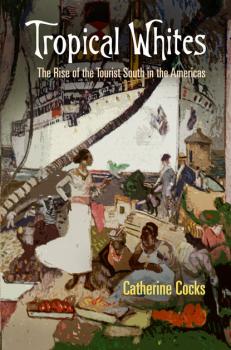Nature and Culture in America
Скачать книги из серии Nature and Culture in AmericaFree and Natural
From Naked Juice® to nude yoga, contemporary society is steeped in language that draws a connection from nudity to nature, wellness, and liberation. This branding promotes a «free and natural» lifestyle to mostly white and middle-class Americans intent on protecting their own bodies—and those of society at large—from overwork, environmental toxins, illness, conformity to body standards, and the hyper-sexualization of the consumer economy. How did the naked body come to be associated with «naturalness,» and how has this notion influenced American culture? Free and Natural explores the cultural history of nudity and its impact on ideas about the body and the environment from the early twentieth century to the present. Sarah Schrank traces the history of nudity, especially public nudity, across the unusual eras and locations where it thrived—including the California desert, Depression-era collectives, and 1950s suburban nudist communities—as well as the more predictable beaches and resorts. She also highlights the many tensions it produced. For example, the blurry line between wholesome nudity and sexuality became impossible to sustain when confronted by the cultural challenges of the sexual revolution. Many longtime free and natural lifestyle enthusiasts, fatigued by decades of legal battles, retreated to private homes and resorts while the politics of gay rights, sexual liberation, environmentalism, and racial equality of the 1970s inspired a new generation of radical advocates of public nudity. By the dawn of the twenty-first century, Schrank demonstrates, a free and natural lifestyle that started with antimaterialist, back-to-the-land rural retreats had evolved into a billion-dollar wellness marketplace where «Naked™» sells endless products promising natural health, sexual fulfilment, organic food, and hip authenticity. Free and Natural provides an in-depth account of how our bodies have become tethered so closely to modern ideas about nature and identity and yet have been consistently subjected to the excesses of capitalism.
Empire of Vines
The lush, sun-drenched vineyards of California evoke a romantic, agrarian image of winemaking, though in reality the industry reflects American agribusiness at its most successful. Nonetheless, as author Erica Hannickel shows, this fantasy is deeply rooted in the history of grape cultivation in America. Empire of Vines traces the development of wine culture as grape growing expanded from New York to the Midwest before gaining ascendancy in California—a progression that illustrates viticulture's centrality to the nineteenth-century American projects of national expansion and the formation of a national culture. Empire of Vines details the ways would-be gentleman farmers, ambitious speculators, horticulturalists, and writers of all kinds deployed the animating myths of American wine culture, including the classical myth of Bacchus, the cult of terroir , and the fantasy of pastoral republicanism. Promoted by figures as varied as horticulturalist Andrew Jackson Downing, novelist Charles Chesnutt, railroad baron Leland Stanford, and Cincinnati land speculator Nicholas Longworth (known as the father of American wine), these myths naturalized claims to land for grape cultivation and legitimated national expansion. Vineyards were simultaneously lush and controlled, bearing fruit at once culturally refined and naturally robust, laying claim to both earthy authenticity and social pedigree. The history of wine culture thus reveals nineteenth-century Americans' fascination with the relationship between nature and culture.
Tropical Whites
As late as 1900, most whites regarded the tropics as «the white man's grave,» a realm of steamy fertility, moral dissolution, and disease. So how did the tropical beach resort—white sand, blue waters, and towering palms—become the iconic vacation landscape? Tropical Whites explores the dramatic shift in attitudes toward and popularization of the tropical tourist «Southland» in the Americas: Florida, Southern California, Mexico, and the Caribbean. Drawing on a wide range of sources, Catherine Cocks examines the history and development of tropical tourism from the late nineteenth century through the early 1940s, when the tropics constituted ideal winter resorts for vacationers from the temperate zones. Combining history, geography, and anthropology, this provocative book explains not only the transformation of widely held ideas about the relationship between the environment and human bodies but also how this shift in thinking underscored emerging concepts of modern identity and popular attitudes toward race, sexuality, nature, and their interconnections. Cocks argues that tourism, far from simply perverting pristine local cultures and selling superficial misunderstandings of them, served as one of the central means of popularizing the anthropological understanding of culture, new at the time. Together with the rise of germ theory, the emergence of the tropical horticulture industry, changes in passport laws, travel writing, and the circulation of promotional materials, national governments and the tourist industry changed public perception of the tropics from a region of decay and degradation, filled with dangerous health risks, to one where the modern traveler could encounter exotic cultures and a rejuvenating environment.
In Darkest Alaska
Before Alaska became a mining bonanza, it was a scenic bonanza, a place larger in the American imagination than in its actual borders. Prior to the great Klondike Gold Rush of 1897, thousands of scenic adventurers journeyed along the Inside Passage, the nearly thousand-mile sea-lane that snakes up the Pacific coast from Puget Sound to Icy Strait. Both the famous—including wilderness advocate John Muir, landscape painter Albert Bierstadt, and photographers Eadweard Muybridge and Edward Curtis—and the long forgotten—a gay ex-sailor, a former society reporter, an African explorer, and a neurasthenic Methodist minister—returned with fascinating accounts of their Alaskan journeys, becoming advance men and women for an expanding United States. In Darkest Alaska explores the popular images conjured by these travelers' tales, as well as their influence on the broader society. Drawing on lively firsthand accounts, archival photographs, maps, and other ephemera of the day, historian Robert Campbell chronicles how Gilded Age sightseers were inspired by Alaska's bounty of evolutionary treasures, tribal artifacts, geological riches, and novel thrills to produce a wealth of highly imaginative reportage about the territory. By portraying the territory as a «Last West» ripe for American conquest, tourists helped pave the way for settlement and exploitation.




